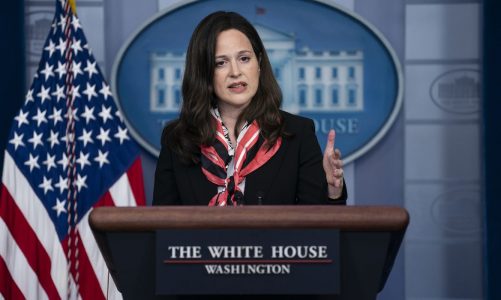
House Democrats unveiled their plan to legalize millions of illegal immigrants — and to make taxpayers pay billions of dollars to process their applications.
Rep. Jerrold Nadler’s proposal, released late Friday, calls for $2.8 billion in federal funds to go to U.S. Citizenship and Immigration Services to help the agency build capacity to handle the surge of paperwork and decision-making expected.
USCIS is currently almost entirely fee-funded, under the theory that immigrants should pay their own way. Mr. Nadler’s proposal would subvert that model.
The new plan would also kick in the amnesty by May 1, 2022, giving USCIS little time to get up and running.
Previous directors have told The Washington Times it would take at least 18 months to prepare for a mass amnesty.
Mr. Nadler, chairman of the Judiciary Committee, envisions legalizing “Dreamers,” who came to the U.S. before the age of 18; those here under Temporary Protected Status; and illegal immigrants who held “essential” jobs during the pandemic. That covers millions of people in the country who currently lack firm legal status.
The plan does not contain any new border security or enforcement measures. That marks a major break with past immigration plans, where new security measures were considered a critical element of preventing the amnesty from enticing more people to come in the future.
The eligibility date is the start of this year, meaning any illegal immigrant who made it here by then could qualify. That includes hundreds of thousands of people who jumped the border during the previous surge in 2019 and who should have been deported but never left.
Those who do legalize would have to pay a $1,500 “supplemental fee” in addition to processing costs.
Mr. Nadler’s plan would apply to those already ordered deported but who absconded, giving them a chance to petition to join the amnesty.
“The Judiciary Committee’s portion of the Build Back Better Act makes pivotal investments in community-based violence reduction and human infrastructure that reflect our commitment to a stronger U.S. economy and a vibrant future for all Americans,” the New York Democrat said in announcing his proposal.
Mr. Nadler’s proposal is part of Democrats’ attempt to use the budget process to pass a $3.5 trillion makeover of America’s social safety net. The immigration amnesty is a tiny part of that.
Using the budget process means Democrats do not have to face the prospect of a GOP filibuster in the Senate, though it’s not yet clear whether the parliamentarian will allow the immigration provisions to be part of the bill. To be eligible for passage in the budget, a plan must be central to the government’s fiscal situation.
This marks the fifth major immigration debate this century. Bills passed the Senate in 2006 and 2013, but didn’t clear the House. Another attempt in 2007 failed to even clear the Senate, while a fourth try during the Trump era fell flat when Democrats rejected the president’s offer of amnesty for “Dreamers” in exchange for border wall funding.
The brunt of the legalization work in Mr. Nadler’s plan would fall on USCIS, which is already stretched to its breaking point — and with the Biden administration piling on new work.
The Times reported in July that a secret study completed last year found the agency had an 11 million man-hour shortage. That was before the coronavirus pandemic, which has deepened the agency’s fiscal troubles.
That Times report also found experts said USCIS would need significant time to prepare to handle a new amnesty program.
Emilio T. Gonzalez, who ran USCIS under President George W. Bush and studied what an amnesty would take during the 2006 and 2007 immigration debates, said they concluded it would take 18 months to two years to prepare.
The agency’s annual budget is a little more than $3 billion, so the $2.8 billion Mr. Nadler wants to add is nearly equivalent to a full year’s funding.




